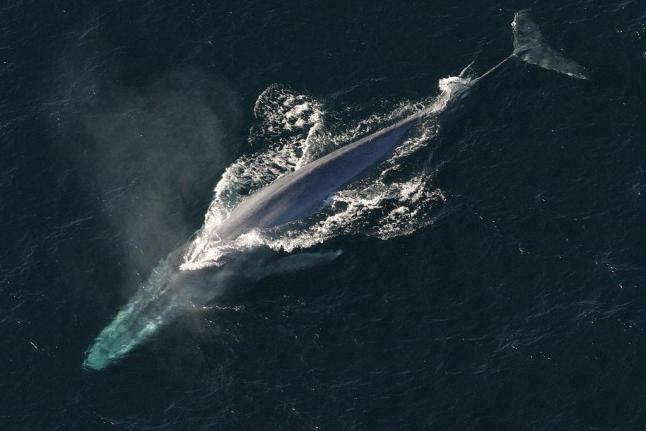Study: Blue Whales Can’t Avoid Barges, Ocean Liners
 PALO ALTO, Calif., May 5 (UPI) — For millions of years, nothing got in the way of the blue whale. When you’re the largest living animal — and the heaviest to ever exist — other creatures tend to get out of your way.
PALO ALTO, Calif., May 5 (UPI) — For millions of years, nothing got in the way of the blue whale. When you’re the largest living animal — and the heaviest to ever exist — other creatures tend to get out of your way.
Because the blue whale has swum largely unfettered through the world’s oceans for so long, the species never developed an aversion to massive ocean liners. Cruise ships and ocean barges are, of course, a product of the modern world — a product the blue whale is not particularly good at avoiding.
“It’s not part of their evolutionary history to have cargo ships killing them, so they haven’t developed behavioral responses to this threat,” biologist Jeremy Goldbogen, a researcher and assistant professor at Stanford’s Hopkins Marine Station, explained in a recent press release. “They simply have no compelling response to avoiding these dangerous ships.”
In a recent study, Goldbogen and his colleagues took a detailed look at this absence of response, with hopes of locating clues to improved conservation policy. Ship collisions, biologists say, are a serious threat to blue whales around the globe.
Researchers already knew whales weren’t good at avoiding big, fast-moving ships — just as deer aren’t particularly adept at reacting to speeding cars. But what they didn’t know is what exactly a whale’s response to an oncoming ship is.
Researchers did know an ideal place to try to find out. Long Beach, California, is home to one of the largest shipping centers in the world. Every day, massive boats move in and out of the port. And just a few miles offshore, deep water currents abut the continental shelf — the upwelling brings large numbers of krill to the surface, a blue whale favorite.
There, researchers located and tagged several whales with GPS tracking and dive logging devices. They cross-referenced the whales’ movements with shipping activity to see how whales interacted with and responded to the strange objects.
They found that the whales do recognize the threat, they just don’t have a well-choreographed response. The whales “play dead,” slowly sinking out of the way.
“Blue whales have a subtle and not very convincing ability to get out of the way of oncoming ships,” said Goldbogen. “Instead of diving, where the animal kicks tail up and goes down vertically, they just sink horizontally. This results in a slow dive and leaves them susceptible to ship strikes.”
Goldbogen and his research partners are planning to conduct a series of additional studies, with hopes of crafting new and compelling recommendations on how boaters and shipping companies can minimize the risk of collisions with unsuspecting whales.
Goldbogen’s study was published this week in the journal Endangered Species Research.





